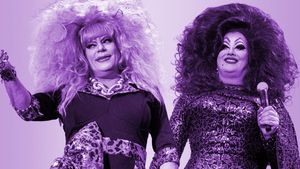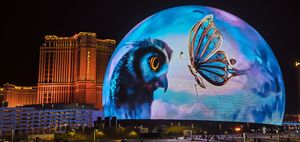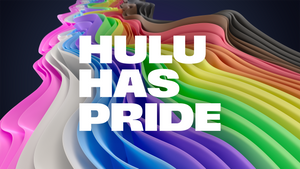For many of us
who have always cast a suspicious eye on why biblical
scholars, theologians, and ministers do not have a clue
about the real life of Jesus, Dan Brown's best
seller turned blockbuster movie, The Da Vinci
Code, sheds an illuminating light on the hysteria that
maintains the mystery.
And the mystery
is that there has always been an open secret about
Jesus' sexuality that not only attacks the
pillars of Christianity but also profoundly plays into
the oppression that women--as well as LGBT
people--face today in both church and society.
And that open
secret about Jesus' sexuality--suggesting that
he was gay or married, not that the two are mutually
exclusive if Jesus was on the down low--point to
the "culture war" issues we are wrestling with
today, namely the institution of marriage, women in
the church, and gay clergy.
The debate about
Jesus' sexuality takes him from his mother's
womb to his tomb. The Christian depiction of Jesus as
a lifelong virgin who had no sexual desire and who
never engaged in sexual intercourse raises anyone's
suspicion, because by today's standards,
Jesus' homosocial environment of 12 men
suggests, according to the law of averages, that at least
one out of the bunch was gay.
Given the nature
of compulsory heterosexuality in Jewish marital laws
during Jesus' time, Jesus might have been forced to
be on the down low.
Encrypted in Da
Vinci's The Last Supper is a spiritual and
sensual narrative about both sacred feminine and
homoerotic aspects of religious life. And while many
Christian fundamentalists and evangelicals find Da
Vinci's sensuous painting blasphemous, Da
Vinci's gay male homoerotic subtext pries open
the door to the quality of the Roman Catholic Church
that gay men find both rabidly homophobic and ravenously
homoerotic.
When asked in
2002 during the Catholic Church sex scandal why so many gay
men are attracted to religious life and the priesthood, Mark
D. Jordan, professor in the religion department at
Emory University and author of The Silence of
Sodom: Homosexuality in Modern Catholicism, told
The Boston Globe:
"Homoeroticism is written into the Catholic
imagination and its institutions. Many gay believers
feel a strong calling to the priesthood or religious
life. The call doesn't seem to deny same-sex desires;
it seems instead to complete them. It is a call to act
out your manhood against social expectations, outside
heterosexual marriage and in the company of other
unmarried men.
"They are
promised an exchange of their 'disordered'
identity as outsiders for a respected and powerful
identity as an insider. They want to remain in the
beautiful, sexually ambiguous space of liturgy. They are
drawn to public celebration of suffering that redeems [and]
they want to live in as gay a world as the Catholic
Church offers."
And let's
not forget the theological significance and homoerotic
overtones in ritual kissing that was a vital part of worship
during the early centuries of the Christian church, as
passing the peace with a hug or handshake is a vital
part of worship in today's Christian churches.
Kissing on the
lips was a way of binding a community together, and it
always followed the communal prayer, the Eucharist, or rites
of baptism and ordination. And it was permitted only
among those of the same gender.
While homophobia
in today's Christian churches is antithetical to the
early church, so too is the denigration of the sacred
feminine.
It is unlikely,
given Jewish marital customs, that Jesus was not married,
and he probably was assigned a wife long before he became an
itinerant preacher and met male and female disciples
on the road.
Even if Jesus
didn't have sex with males or females, he did tap
into the forbidden zone: his sacred feminine. The
sacred feminine is not only the life force tied to
women's ability to produce new life but is also the
power of the erotic that African-American lesbian poet Audre
Lorde depicted as "a source within each of us
that lies in a deeply female and spiritual plane,
firmly rooted in the power of our unexpressed or
unrecognized feeling."
Our sexualities
are the expressions of who we are. They are a language
and a means to communicate our spiritual need for intimate
communion--both human and divine. They're
our self-understanding through which we experience the
world.
However, the
hysteria that surrounds Jesus' sexuality forces us
all to see the walls erected in our society and in our
churches, walls that prohibit us from living freely in
our bodies and force some of us to live on the down
low.
These walls not
only contribute to the false socialization of who we are
as male and female, but they also contribute to the false
spiritualization of who we are as the body of Christ.


















































































